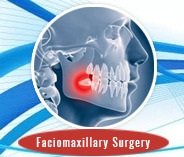If you have been told you have periodontal (gum) disease, you’re not alone. Many adults world over currently have some form of the disease. Periodontal diseases range from simple gum inflammation to serious diseases that result in major damage to the soft tissue and bone that support the teeth. In the worst cases, teeth are lost. Periodontal (gum) diseases, including gingivitis and periodontitis, are serious infections that, if left untreated, can lead to tooth loss. Periodontal disease can affect one tooth or many teeth.

Receding Gums
Gum recession is the process in which the margin of the tissue that surrounds the teeth wears away in a direction toward the end of the root, exposing more of the tooth. Receding gums may be one of the first signs of gum disease. When gum reduction occurs, “pockets,” or gaps, form between the teeth and gum line, making it easy for disease-causing bacteria to build up. If left untreated, the supporting tissue and bone structures of the teeth can be severely damaged, and may ultimately result in tooth loss.
Causes of Gum Disease
Our mouths are full of bacteria. These bacteria, along with mucus and other particles, constantly form a sticky, colourless “plaque” on teeth. Brushing and flossing help get rid of plaque. Plaque that is not removed can harden and form “tartar” that brushing doesn’t clean. Only a professional cleaning by a dentist or dental hygienist can remove tartar. Other factors include smoking, hormonal changes in girls/women, diabetes, certain medications, genetic susceptibility and illness like cancer and their treatments.
Symptoms of Gum Disease
Symptoms of gum disease include:
- Bad breath that won’t go away
- Red or swollen gums
- Tender or bleeding gums
- Painful chewing
- Loose teeth
- Sensitive teeth
- Receding gums or longer appearing teeth
Treatment of Gum Disease
Following are some of the procedures that dentists use to treat patients diagnosed with a periodontal (gum) disease.
Non Surgical Procedures
Mild gum recession may be able to be treated by your dentist by deep cleaning the affected area. During the deep cleaning – also called tooth scaling and root planing – plaque and tartar that has built up on the teeth and root surfaces below the gum line is carefully removed and the exposed root area is smoothed to make it more difficult for bacteria to attach itself. If your gum recession cannot be treated with deep cleaning because of the excess loss of bone and pockets that are too deep, gum surgery may be required to repair the damage caused by gum recession.
Surgical Procedures for Receding Gums
- Pocket depth reduction: During this procedure, the dentist, or periodontist (gum doctor) folds back the affected gum tissue, removes the harmful bacteria from the pockets, and then snugly secures the gum tissue in place over the tooth root, thus eliminating the pockets or reducing their size.
- Regeneration: If the bone supporting your teeth has been destroyed as a result of gum recession, a procedure to regenerate lost bone and tissue may be recommended. As in pocket depth reduction, your dentist will fold back the gum tissue and remove the bacteria. A regenerative material, such as a membrane, graft tissue, or tissue-stimulating protein, will then be applied to encourage your body to naturally regenerate bone and tissue in that area. After the regenerative material is put in place, the gum tissue is secured over the root of the tooth or teeth.
- Soft tissue graft: There are several types of gum grafting procedures, but the most commonly used one is called a connective tissue graft. In this procedure, a flap of skin is cut at the roof of your mouth (palate) and tissue from under the flap, called subepithelial connective tissue, is removed and then stitched to the gum tissue surrounding the exposed root. After the connective tissue – the graft – has been removed from under the flap, the flap is stitched back down. During another type of graft, called free gingival graft, tissue is taken directly from the roof of the mouth instead of under the skin. Sometimes, if you have enough gum tissue surrounding the affected teeth, the dentist is able to graft gum from near the tooth and not remove tissue from the palate. This is called a pedicle graft. Gum graft surgery ensures a high rate of success for treating gum diseases.
Laser Gum Surgeries
Research suggests that the use of lasers as an adjunct to scaling and root planing (SRP) may improve the effectiveness of gum surgeries. In addition, when the lasers are used properly there can be less bleeding, swelling and discomfort to the patient during surgery. However, each laser has different wavelengths and power levels that can be used safely during periodontal gum surgeries. Damage to periodontal tissues and gum surgery pain can result if an inappropriate wavelength and/or power level is used during a periodontal procedure.
Cost of Gum Surgery
Normally, the costs involved in gum surgery differ and depend on how much of your mouth is undergoing a procedure as well as what kind of procedure is being used and if there are any other procedures that will be carried out. Lots of patients decide to correct their smiles by not only investing in gum surgery but also other cosmetic dentistry procedures, such as crowns or veneers. The whole strategy should be discussed in detail with your dentist so that you’re aware of all the costs.















